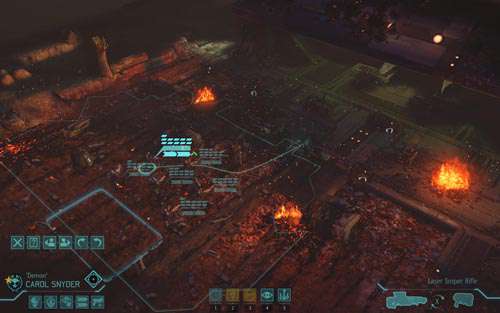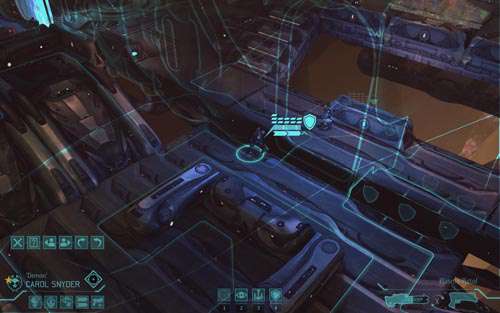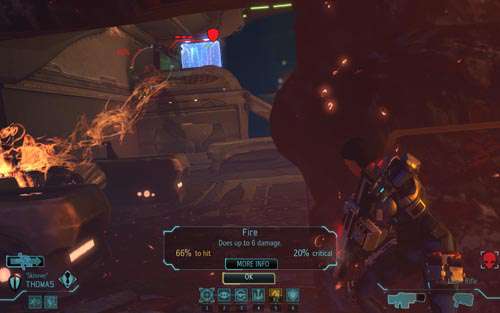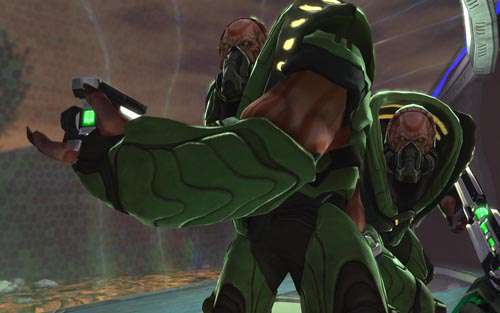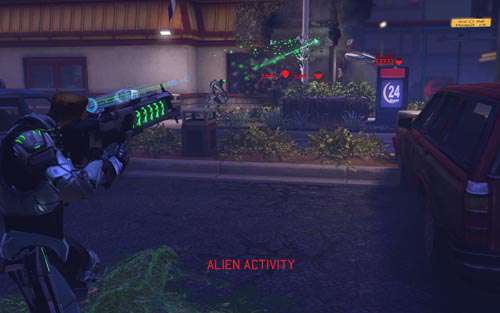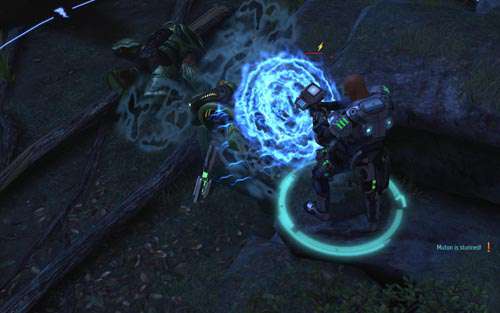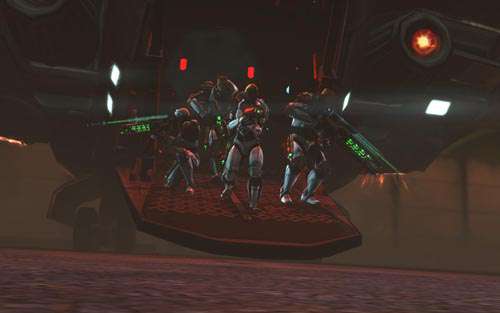- Qualcomm Launches Snapdragon 4 Gen 2 Mobile Platform
- AMD Launches Ryzen PRO 7000 Series Mobile & Desktop Platform
- Intel Launches Sleek Single-Slot Arc Pro A60 Workstation Graphics Card
- NVIDIA Announces Latest Ada Lovelace Additions: GeForce RTX 4060 Ti & RTX 4060
- Maxon Redshift With AMD Radeon GPU Rendering Support Now Available
XCOM: Enemy Unknown Review – Tinfoil Hats Recommended

It’s been a long time coming. Developed by the fine folks at Firaxis, XCOM: Enemy Unknown is a reimagining of the classic strategy game, but without the genre-bending tactics of other ill-fated titles. Will veterans of the original rejoice? Does it remain fresh for a new audience? Have I really been mind controlled? Read on to find out!
Page 2 – Let’s Talk Tactics…
One thing that has caused a great deal of contention, especially to veterans, was the removal of Time Units. For those new to the series, Time Units were an arbitrary point system that limited the number of actions you could perform per turn, and it was something of a guessing game at the best of times. Even minute actions such as turning, crouching and basic inventory management would consume time units – not to mention the failings of a poor path-finder algorithm sending units in circles.
I was personally not fond of the system. In later X-COM games, real-time was introduced as an alternative method, where actions could be planned out paused, then ‘played’ at various speeds with the AI responding in-kind. This took a bit of time to adjust to, especially coming from years of turn-based, but it worked, sort of.
This time round, we are back to turn-based strategy, but with a twist. No more time units and mental arithmetic getting in the way, a misjudged angle preventing you from firing, or a bad path-finder sending you into a hoard of oncoming aliens (I lied, that still happens). This time, it’s a phase-based system, where each soldier performs up to 2 actions. Run and shoot, an extended run, use an ability to fire twice, or run twice and shoot… it simplifies the whole process and you spend more time thinking about tactics.
What’s more is that switching weapons has no cost, so you can gauge which weapon to use depending on the situation (going for a kill or a stun, what’s your aim like with the two, can you get a critical hit in?). Crouching is completely automated too due to the cover system. Soldiers will make use of whatever is around them, with nice little icons showing either full or partial cover. You don’t even need to set a direction for them to stare at.
Terrain and cover in general is a lot more important too – even with the best armor in the game, you can still take a plasma shot to the face and end up face down in the dirt. There is also a flanking bonus – or penalty, depending which side you’re on, where the target becomes much easier to hit and has a higher critical hit chance – so don’t go standing out in the open and always watch your back, and sides.
Elevation doesn’t play a major role anymore either; multi-level buildings are just the ground floor and roof. Even boarding ships, you rarely need to worry about different floors. However, when you do find yourself switching between levels, it’s an often painful experience, and this is one of the few major gripes I have with the game.
This is mainly an interface issue, but it does complicate an otherwise simple task. Quite often, the auto-hide function does not work, especially when dealing with transitions and half-levels that are frequently found on ships. This makes targeting the correct location to run to very difficult, and general selections non-trivial. It also lends to a rather messy view with some things hidden, and other things that should be out of the way, obscuring critical cover positions. This should be fixed in due time, but we’ll see.
There are a number of tactical options that all troops have as well; one is the familiar Overwatch, and the other Hunker Down. Overwatch is a state of reaction fire that you can assign to soldiers, where upon they will automatically shoot at a target that enters their line of sight, in either your turn or the aliens.
One slight gripe I have with this compared to the former games is that, all soldiers that can take a shot, will do so at the same time. This can lead to a case of overkill for a single target, but additional targets that pop their head round the corner will go by unharmed. In a way, this makes sense; you can’t coordinate a reaction shot with everyone else, you take it when you have a chance – but hey, I did say it was a slight gripe. Hunker Down is as its name suggests – you make use of your available cover more effectively, making you harder to hit, but with limited sight. Useful for when under suppression fire.
Speaking of useful, no more ammo! Quiet down, I heard that disgruntled groan. In truth, I do believe this was a good thing. While not strictly ‘realistic’, it didn’t serve much purpose other than to waste a turn flicking through your inventory – and who realistically ran out of ammo in the original games? While ammo may be free, reloading is not, as it will consume your action phase. The weapon will also determine how often you need to reload too. So in all honesty, it remains balanced – you still lose your turn, but at least you don’t have to worry about 100s of ammo clips filling up your warehouse.
One issue that will crop up for many is the lack of free-aim on most weapons. You can no longer deliberately shoot at terrain to uncover targets, or shoot at a target that’s outside of your visual range (at least not without a certain skill). This makes for some troublesome gameplay. If you miss a target and hit a wall instead, you destroy the wall allowing better aim for other soldiers. So why can’t this be done deliberately? Explosives have free aim, so why not gun-fire?
Another issue is that rocket launchers has very limited range, not much further than a grenade, and even the slightest piece of terrain can limit this further. These little inconsistencies are problematic, but not completely detrimental. Something for the modders to work on (hint hint, nudge nudge).
To Kill or Not to Kill…
While there is a great deal of nuance with the tactics, especially with regard to abilities and weapon limitations, one thing will plague you through the entire game. Should you kill or capture? Killing a target is comparatively easy, shoot it till it’s dead. Problem, when it dies, any equipment it was carrying explodes and all you’re left with are Fragments and a corpse. Not much can be done with those.
It’s still useful to an extent, but it would be much better to keep the equipment intact. This is when capturing aliens alive becomes critical. It’s more than just for interrogation purposes, you need whole pieces of tech to research too. Much of the equipment you find can be reverse-engineered from the fragments and various research paths, but it’s almost prohibitively expensive to manufacture, requiring what precious few resources you’ve scavenged so far.
There is another challenge to overcome too. Using explosives will destroy everything except the corpse, leaving you with almost nothing. So while explosives are effective and useful for clearing terrain, they will destroy whatever salvageable equipment may be left.
This leads me onto loadout. There is no inventory management system, all equipment is chosen before combat, and what you bring is limited. So while ammo is unlimited, things such as grenades and medkits are not. These are basically ‘utility’ items, support, and have limited uses.
What will bug a lot of people, myself included, is that each soldier can typically only carry one utility item, and there are quite a few to choose from. Worse still, you have to pick between things like a grenade, extra body armor, an Arc Thrower (stun gun), or a S.C.O.P.E., you can’t have it all! Soldiers that have the support class, may pick two such utility items in later ranks, as well as unlock multiples of the same (use a medkit three times, or carry extra grenades). Doesn’t matter the diversity of your equipment though, you can guarantee that the situation your soldier finds themselves in, you’ll have the wrong utility item – now if only stun guns could heal.
Support our efforts! With ad revenue at an all-time low for written websites, we're relying more than ever on reader support to help us continue putting so much effort into this type of content. You can support us by becoming a Patron, or by using our Amazon shopping affiliate links listed through our articles. Thanks for your support!




